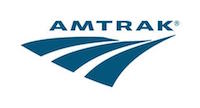
Reuters reports that two settlements have been reached thus far, although dozens more remain. The terms of both settlements are confidential and include women from New York and New Jersey. One sustained a concussion and injuries to her ribs while the other sustained a jaw injury and “permanent physical damage.”
The investigation into Amtrak 188 brought two major safety deficiencies to light. The first was that a safety system known as positive train control had not been installed on the ill-fated train.
Positive train control is like an auto-brake for trains. When the system detects that a train has entered a speed-limited area too quickly, positive train control slows the train without any input from the train’s engineer.
Had this system been installed on Amtrak 188, it could have prevented the crash from occurring. Amtrak 188 derailed as a result of entering a 50-mile per hour turn at over 100-miles per hour.
Automated systems aside, the question of why the train was going so fast in the first place was also investigated. While initial indications and media reports seemed to set the stage for an impaired engineer, either through substances or the use of a cell phone while at the controls, the cause was later attributed to distraction by radio traffic.
Movement through a major metropolitan area such as Philadelphia places numerous additional stresses on a train’s single engineer. Given the increase in radio communications, he may have missed the sign telling him to slow down; not realizing he was going far too fast until it was too late.
As a federally-run organization, Amtrak enjoys a government mandated liability limit of $295 million in any single incident. And, with the terms of the first two settlements being kept in strict confidence, there’s no way of knowing how much of an impact the settlement structure will have on the nearly financially-insolvent transportation provider. Calls for system-wide safety improvements continue, however, and Amtrak’s year-over-year losses continue to mount.
